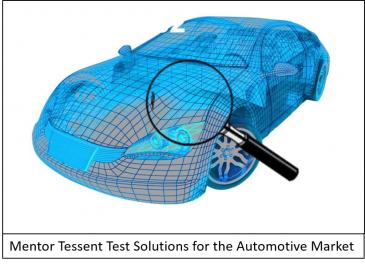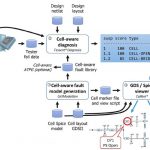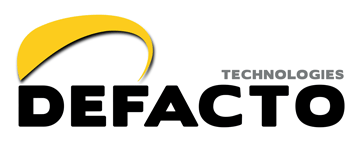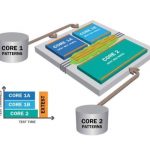It is pretty common for physical layout to work from a flattened hierarchy for blocks or even full chips, even though the front-end design starts with a hierarchical representation. This was not always the case. Way back when, the physical layout matched the logical hierarchy during the design process. Of course, this led to all… Read More
Tag: dft
How to be Smart About DFT for AI Chips
We have entered the age of AI specific processors, where specialized silicon is being produced to tackle the compute needs of AI. Whether they use GPUs, embedded programmable logic or specialized CPUs, many AI chips are based on parallel processing. This makes sense because of the parallel nature of AI computing. As a result, in… Read More
The Pain of Test Pattern Bring-up for First Silicon Debug
In the semiconductor world we have divided our engineering talent up into many adjacent disciplines and each comes with their own job titles: Design engineers, Verification engineers, DFT engineers, Test engineers. When first silicon becomes available then everyone on the team, and especially management all have a few big … Read More
Mentor Tessent MissionMode Provides Runtime DFT for Self-Correcting Automotive ICs
The automotive industry continues push the limits on how “smart” we can make our vehicles and from that, it follows as to how smart we can make the electronics in the vehicles. When I think of smart cars (and smart automotive ICs) I typically think of things like advanced driver-assistance systems (ADAS) that use AI and neural networks… Read More
Mentor Tessent Products Ready for Second Edition of ISO 26262 Coming in March 2018
Have you notice how smart your automobile is getting? Watching the first round of NFL playoffs I lost count on the number of TV commercials showing cars weaving through tight construction zones (and Star Wars figures), big trucks parking in incredibly tight spaces, cars avoiding rear-end collisions and pedestrians, and even … Read More
Finding Transistor-level Defects Inside of Standard Cells
In the earliest days of IC design the engineering work was always done at the transistor-level, and then over time the abstraction level moved upward to gate-level, cell-level, RTL level, IP reuse, and high-level modeling abstractions. The higher levels of abstraction have allowed systems to be integrated into an SoC that can… Read More
Reducing the Cost of SoC Testing
Every year certain technology themes appear, like at ITC this year a big theme was how to reduce the cost of SoC testing. I spoke with Rob Knoth of Cadence by phone to hear more about this cost of test theme. Rob gave me an example of an SoC that takes 27 seconds on a tester, so at $0.04 per second in test costs amounts to $1.08 per part. If you… Read More
CEO Interview: Chouki Aktouf of Defacto Technologies
As a 30+ year semiconductor veteran I can tell you with 100% certainty that start-ups are the lifeblood of EDA. The mantra is “Innovate or Die!” and that is exactly what Defacto is doing. After more than 10 years of innovating in Design for Test at RTL, Defacto is now offering a complete EDA solution based on generic EDA… Read More
DFT Approaches for Giga-gate SoC Designs
In the early days of IC design there were arguments against using any extra transistors or gates for testability purposes, because that would be adding extra silicon area which in turn would drive up the costs of the chip and product. Today we are older and wiser, realizing that there are product pricing benefits to quickly test each… Read More
A Brief History of Defacto Technologies
In early 2000s, semiconductor design at RTL level was gaining momentum. The idea was to process more design steps such as insertion of test and other design structures upfront at the RTL level. The design optimization and verification were to be done at the RTL level to reduce long iterations through gate level design because changes… Read More









